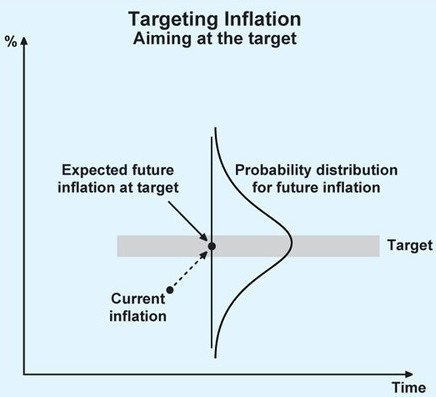Contents
In such cases, investors pledge their shares for margins called collateral margin, which is further utilised for trading in different segments of the market. TradeSmart’s online collateral haircut calculator lets you get margin/exposure against shares into your Demat account to keep them as collateral. A haircut is an overall percentage through which the market value of your pledged shares is diminished with the motive of calculating the collateral value. Margin against shares allows you to get exposure/margin against shares in your demat account by keeping them as collateral. Haircut is the percentage by which the market value of your pledged shares is reduced for the purpose of calculating the collateral value. The data shows that out of the 1,858 corporate debtors referred to the NCLT up to March 31, 2019, 920 cases (i.e. 49%) have been referred by the operational creditors.

So, the next time you plan to put your securities as collateral, check the haircut value beforehand. This will help you in knowing the exact limit you will receive against your collateral. So, if you wish to increase your margin, you can pledge any of these securities with us. For pledging stocks, we have categorized the scrips into 4 categories, and haircut is levied for each category. One of the ways of monetizing your equity Demat holdings is to borrow against shares. Here again, you can borrow with a haircut of around 40-50% as the case and risk perception may be.
Vi) The holdings of securities devolved on the originator through underwriting should be sold to third parties within three-month period following the acquisition. In case of failure to off-load within the stipulated time limit, any holding in excess of 20 per cent of the original amount of issue, including secondary market purchases, shall be deducted 50 per cent from Tier 1 and 50 per cent from Tier 2 capital. Vi) No potential future credit exposure would be calculated for single currency floating/floating interest rate swaps; the credit exposure on these contracts would be evaluated solely on the basis of their mark-to-market value. V) For contracts that are structured to settle outstanding exposure following specified payment dates and where the terms are reset such that the market value of the contract is zero on these specified dates, the residual maturity would be set equal to the time until the next reset date.
‘Beneficial Owner’ is not a ‘Related Party’ under the IBC
The unrated short term claim on counterparty will attract a risk weight of at least one level higher than the risk weight applicable to the rated short term claim on that counter-party. If a short-term rated facility to counterparty attracts a 20 per cent or a 50 per cent risk-weight, unrated short-term claims to the same counter-party cannot attract haircut meaning in finance a risk weight lower than 30 per cent or 100 per cent respectively. 6.2.1 Banks should use the chosen credit rating agencies and their ratings consistently for each type of claim, for both risk weighting and risk management purposes. Banks will not be allowed to “cherry pick” the assessments provided by different credit rating agencies.
- These options for credit and operational risks are based on increasing risk sensitivity and allow banks to select an approach that is most appropriate to the stage of development of bank’s operations.
- A collateral haircut calculator is used to determine the amount of haircut a single stock conveys.
- Policies for hedging and/or mitigating risk and strategies and processes for monitoring the continuing effectiveness of hedges/mitigants.
- However, this aspect must be considered when assessing the ‘haircut’, since the recovery of creditors is being calculated as a percentage of the claims, though these have not even been acknowledged by the lender in its balance-sheet.
- With a view to enhance the ease of access to the Pillar 3 disclosures, banks may make their annual disclosures both in their annual reports as well as their respective web sites.
- Haircut in the stock market is all about the type of asset that you present as collateral.
12.1.1 The purpose of Market discipline in the Revised Framework is to complement the minimum capital requirements and the supervisory review process . The aim is to encourage market discipline by developing a set of disclosure requirements which will allow market participants to assess key pieces of information on the scope of application, capital, risk exposures, risk assessment processes, and hence the capital adequacy of the institution. 9.2.3 The New Capital Adequacy Framework provides that internationally active banks and banks with significant operational risk exposures are expected to use an approach that is more sophisticated than the Basic Indicator Approach and that is appropriate for the risk profile of the institution. However, to begin with, banks in India shall compute the capital requirements for operational risk under the Basic Indicator Approach.
These guidelines, therefore, seek to provide only broad principles to be followed by the banks in developing their ICAAP. The Pillar 1 is the Minimum Capital Ratio while the Pillar 2 and Pillar 3 are the Supervisory Review Process and Market Discipline, respectively. An illustrative outline of the format of the ICAAP document, to be submitted to the RBI, by the banks, is furnished at Annex – 14. # These ratings indicate the ratings assigned by Indian rating agencies/ECAIs or foreign rating agencies. In the case of foreign ECAIs the ratings symbols used here correspond to Standard and Poor. 8.3.1 This section describes the framework for measuring the risk of holding or taking positions in debt securities and other interest rate related instruments in the trading book.
Haircut: What it is and how it works?
Where the collateral is held by a custodian, banks must take reasonable steps to ensure that the custodian segregates the collateral from its own assets. Banks must have clear and robust procedures for the timely liquidation of collateral to ensure that any legal conditions required for declaring the default of the counterparty and liquidating the collateral are observed, and that collateral can be liquidated promptly. Banks have a specific lien on the collateral and the requirements of legal certainty are met.
Each of these disclosures pertaining to a financial year should be available on the websites until disclosure of the third subsequent annual disclosure is made. There is likely to be centralised control over the models used throughout thegroup, the assumptions made and their overall calibration. 11.2.5 As and when the advanced approaches envisaged in the Basel II document are permitted to be adopted in India, the SREP would also assess the ongoing compliance by the banks with the eligibility criteria for adopting the advanced approaches. 11.1.5 These guidelines seek to provide broad guidance to the banks by outlining the manner in which the SREP would be carried out by the RBI, the expected scope and design of their ICAAP, and the expectations of the RBI from the banks in regard to implementation of the ICAAP. Iii) The collateral will be adjusted downwards/marked down as per applicable haircut. Ii) The amount of money received will be treated as collateral for the securities lent/sold/pledged.
Ii) In case of banks where capital adequacy norms are not applicable at present, the matter of investments in their capital-eligible instruments would not arise for now. However, column Nos. 2 and 4 of the Table above will become applicable to them, if in future they issue any capital instruments where other banks are eligible to invest. However, column Nos. 3 and 5 of the Table above will become applicable to them, if in future they issue any capital instruments where other banks are eligible to invest.
way to open an account!
To the extent that risks cannot be reliably measured with quantitative tools – for example, where measurements of risk are based on scarce data or unproven quantitative methods – qualitative tools, including experience and judgment, may be more heavily utilised. Banks should be cognisant that qualitative approaches have their own inherent biases and assumptions that affect risk assessment; accordingly, banks should recognise the biases and assumptions embedded in, and the limitations of, the qualitative approaches used. There could be several approaches to the measurement of credit https://1investing.in/ concentration the banks’ portfolio. One of the approaches commonly used for the purpose involves computation of Herfindahl-Hirshman Index . It may please be noted that the HHI as a measure of concentration risk is only one of the possible methods and the banks would be free to adopt any other appropriate method for the purpose, which has objective and transparent criteria for such measurement. A) While assessing the exposure to concentration risk, a bank should keep in view that the calculations of Basel II framework are based on the assumption that a bank is well diversified.
They together owed Rs 8,163 crore to creditors, while they had absolutely no assets when they entered the IBC process. In comparison, there are cases which have yielded a zero haircut, in addition to rescuing the company. As an example, we can look at the case of Essar Steel Limited which is at present under dispute due to the extent of funds to be paid out to the operational creditors as part of the resolution plan.

Since flat / house is not an eligible collateral and since banks normally recover the dues by adjusting the superannuation benefits only at the time of cessation from service, the concessional risk weight shall be applied without any adjustment of the outstanding amount. In case a bank is holding eligible collateral in respect of amounts due from a staff member, the outstanding amount in respect of that staff member may be adjusted to the extent permissible, as indicated in paragraph 7 below. 5.12.6 Claims secured by residential property, as defined in paragraph 5.10.1, which are NPA will be risk weighted at 100 per cent net of specific provisions. If the specific provisions in such loans are at least 20 per cent but less than 50 per cent of the outstanding amount, the risk weight applicable to the loan net of specific provisions will be 75 per cent. If the specific provisions are 50 per cent or more the applicable risk weight will be 50 per cent.
Haircuts are defined as the losses incurred by the creditors (banks in this case) on resolving the bad debts or stressed assets
For this cause, even after the crisis, the BoE decided to proceed accepting a broader vary of eligible collateral in its common liquidity insurance coverage lending operations. Nonetheless underlying risks may remain if, in apply, the BoE’s liquidity facilities incentivise the usage of riskier collateral property and the participation of riskier banks. The knowledge might be made obtainable to the European Securities and Markets Authority, the European Systemic Risk Board, the European Banking Authority, the European Insurance and Occupational Pensions Authority and the European Central Bank.
5.13.4 ‘Capital market exposures’ will attract a 125 per cent risk weight or risk weight warranted by external rating of the counterparty. LTV ratio should be computed as a percentage with total outstanding in the account (viz. “principal + accrued interest + other charges pertaining to the loan” without any netting) in the numerator and the realisable value of the residential property mortgaged to the bank in the denominator. 5.6.3 However, the claims on a bank which are denominated in ‘domestic’ foreign currency met out of the resources in the same currency raised in that jurisdiction will be risk weighted at 20 per cent provided the bank complies with the minimum CRAR prescribed by the concerned bank regulator. However, column No. 2 and 4 of the Table above will become applicable to them, if in future they issue any capital instruments where other banks are eligible to invest. 5.3.3 However, in case a Host Supervisor requires a more conservative treatment to such claims in the books of the foreign branches of the Indian banks, they should adopt the requirements prescribed by the Host Country supervisors for computing capital adequacy.
Haircuts: A way to address NPAs in banking system
C) The performance of specialised portfolios may, in some instances, also depend on key individuals / employees of the bank. Such a situation could exacerbate the concentration risk because the skills of those individuals, in part, limit the risk arising from a concentrated portfolio. The impact of such key employees / individuals on the concentration risk is likely to be correspondingly greater in smaller banks. In developing its stress tests and scenario analyses, a bankshall, therefore, also consider the impact of losing key personnel on its ability to operate normally, as well as the direct impact on its revenues. Supervisors should review and evaluate a bank’s compliance with the regulatory capital ratios. 9.3.4 As a point of entry for capital calculation, no specific criteria for use of the Basic Indicator Approach are set out in the New Capital Adequacy Framework.
In the case of Government securities, the capital charge for credit / specific risk will be ‘zero’. 6.2.6 For assets in the bank’s portfolio that have contractual maturity less than or equal to one year, short term ratings accorded by the chosen credit rating agencies would be relevant. For other assets which have a contractual maturity of more than one year, long term ratings accorded by the chosen credit rating agencies would be relevant. The investment in paid up equity of financial entities, which are specifically exempted from ‘capital market exposure’, shall be assigned a 100 percent risk weight.










Más historias
PRESIDENCIA DE YPFB DESTITUYE A DIRECTORES DE 9 DISTRITOS
DIPUTADOS DAN LUZ VERDE A LA ELECCIÓN DE VOCALES DEL TSE SIN EXÁMENES Y CON PLAZOS MÍNIMOS
EL PRESIDENTE SE DA 6 MESES PARA REVERTIR “EL DESPILFARRO Y LA DEMAGOGIA” QUE DEJO AL MAS